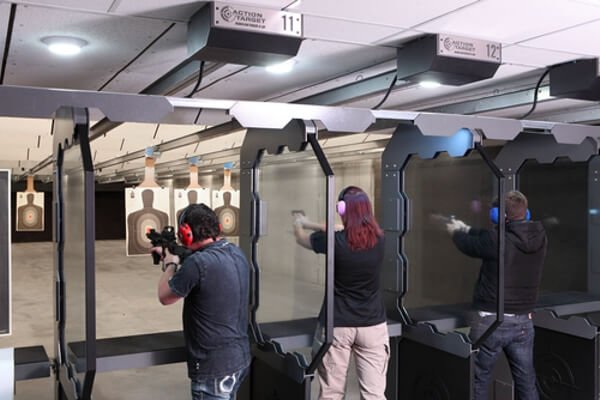Each gun range will have their own policy on shooting when drawing from the holster. Some ranges will disallow this practice altogether while other ranges will find shooting from the holster acceptable. Most gun ranges, however, will probably set conditions on holster firing such as the completion of mandatory special training or possessing prior range certification in order to proceed. It’s always best to consult with your local gun range to see what their holster drawing policy is before venturing out; never assume that you have blanket permission to draw from the holster just because you’ve watched a few YouTube videos, read a few blog articles, you’re current or ex-military, current or ex-law enforcement, a government agent, or you received specialized training at another facility. Gun ranges enact their policies based on insurance company mandates, past experiences with customers on the shooting line, and consultations with their legal department. Some ranges are willing to accept a manageable degree of risk while other ranges craft policies in an attempt to reduce their exposure to risk as much as possible.
It can be argued that practicing drawing from the holster is an important exercise. You never know when you’ll need to draw your firearm from its holster. For example, you might need to draw while filling up your car with gas, shopping at the grocery store, holding an umbrella, or walking the dog. The point of practicing is to build confidence through repetition. And while practicing this exercise at the local gun range makes sense from the user’s point of view, it may not always make sense from the range’s point of view. Since it is the range’s responsibility to create a safe shooting environment for all guests, prohibiting drawing from the holster is meant to prevent accidental discharges during the firearm’s removal. Bullets from accidental discharges have the potential to ricochet in the shooting area and for some ranges, holster drawing isn’t a risk worth taking.
Family Armory range rules state:
No drawing from the holster. EXCEPTION (A): During special events where holster draw has been pre-approved and during formal training sessions.
Holster safety tips
Drawing from the holster increases the risk of an accidental discharge to the lower body
Negligent discharge during a holster draw is possible. And while practicing drawing from the holster is an important exercise, the risk might be too great for some ranges to take on – especially when other guests are in the shooting area and the potential for a ricochet exists. But should your range allow firing from the holster, it is important to keep in mind that most accidental discharges occur either during the firearm’s removal from the holster or during the firearm’s placement back into the holster. Because drills focusing on drawing from the holster usually involve speed, it is possible for the index finger to fall into the trigger guard and activate the trigger during the pull from the holster – as demonstrated by this negligent firearm discharge found on YouTube.
Be mindful when reholstering a loaded firearm
A negligent discharge during the reholstering of a firearm usually involves an article of clothing or a finger getting caught up in the trigger guard during the firearm’s travel back into the holster. Sometimes clothing bunches up around the holster or a string from a piece of clothing comes loose during shooting. Other times, it’s possible for the index finger to become wedged into the holster along with the gun, especially during fast reholstering. If your gun range allows for holstering and unholstering in the shooting stall, it is important to be mindful of the trigger the entire time and the potential obstacles that may come into contact with the trigger.
Respect the range rules
Gun ranges put a lot of thought into designing the safety rules for their particular facility. Even if the range rules consisted of no more than the four foundational rules of gun safety, the result of following them will be a positive shooting experience. In fact, most other range rules and policies can be traced back to one of these four rules. Somes ranges allow drawing from the holster, while others do not. Others still conditionally allow it after first obtaining special certification to do so. Each business has its own policies and reasons for those policies – when in doubt, call them or browse their website for clarification.
Summary: While it can be argued that drawing from the holster is an important exercise, not all ranges will allow it – or will allow it after certain conditions have been met – for their own reasons.






